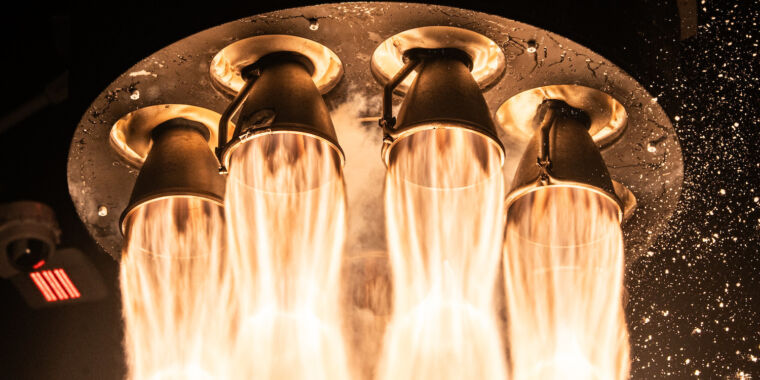[ad_1]
China launched a lunar satellite designed to play a critical role in its competition with the U.S. to be the leader in exploration of the moon.
The Queqiao-2 relay satellite went into orbit aboard a Long March-8 rocket at 8:31 a.m. Beijing time from the Wenchang launch site in southern China’s Hainan province, according to the China National Space Administration.
The 1.2-ton satellite is necessary to ensure communication for Chang’e-6, a Chinese spacecraft scheduled to travel to the far side of the moon in the first half of this year.
Because the moon’s far side never faces Earth, Chang’e-6 will need to use Queqiao-2 to relay signals to and from the planet.
China in 2019 became the first and so far only country to land on the moon’s far side. The follow-up Chang’e-6 mission will be the first to attempt to collect samples from there and return them to Earth.
Both China and the U.S. are working on plans to send astronauts to the moon before the end of the decade.
Read More: Inside the New Race to the Moon
The launches of Queqiao-2 and Chang’e-6 are part of a busy year for China, with a record 100 missions planned, a 40% increase from the total in 2023.
The country’s state-owned space contractor China Aerospace Science and Technology Corp. will conduct almost 70 launches, with the rest expected to be done by Chinese space startups. Premier Li Qiang identified commercial spaceflight as a major emerging industry in his report to China’s National People’s Congress in early March.
All that activity has the potential to exacerbate tensions with neighboring countries that could be in range of falling bits of rocket debris.
On Wednesday, the Philippine Space Agency confirmed the China rocket launch and said debris was projected to have fallen within identified drop zones near to Panay Island in the country’s south.
“Unburned debris from rockets, such as the booster and faring, are designed to be discarded as the rocket enters outer space. While not projected to fall on land features or inhabited areas, falling debris poses danger and potential risk to ships, aircraft, fishing boats, and other vessels that will pass through the drop zone,” the Philippine Space Agency said.
It added the possibility of an uncontrolled re-entry to the atmosphere of the rocket’s upper stages “cannot be ruled out at this time.”
The Philippine space agency last month issued a warning about possible hazards posed by the launch of another Chinese rocket.
In 2022, Manila issued a diplomatic note seeking an explanation from Beijing after an incident between Philippine and Chinese vessels in the South China Sea involving suspected rocket debris.
Maqvi News #Maqvi #Maqvinews #Maqvi_news #Maqvi#News #info@maqvi.com
[ad_2]
Source link

















































